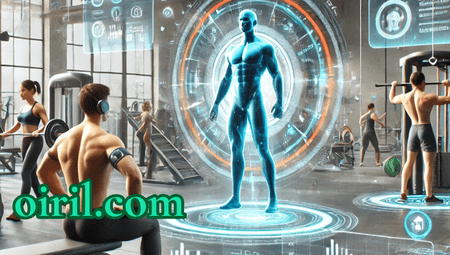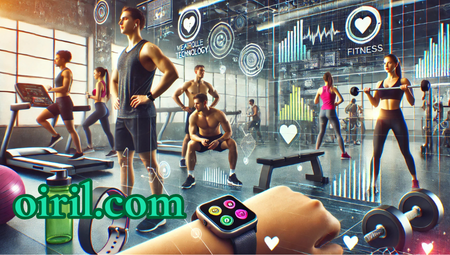The Future of the Fitness Industry How AI and Tech Are Shaping Bodybuilding
The fitness and bodybuilding industry has been undergoing a significant transformation over the last decade, with technology playing an increasingly pivotal role. As we move into 2024, advancements in artificial intelligence (AI), wearable technology, and digital platforms are reshaping how bodybuilders and fitness enthusiasts train, recover, and optimize their performance. The future of bodybuilding is not just about lifting heavier weights but about integrating cutting-edge tools to enhance both physical and mental health, pushing the boundaries of what the human body can achieve.
In this article, we will explore the latest technological innovations shaping the bodybuilding world and examine how these trends are changing the way athletes approach their training routines, recovery, nutrition, and competition preparation.
AI-Powered Training Programs: Personalized and Precise
One of the most significant trends in the fitness industry is the rise of AI-powered training programs. These intelligent platforms use data-driven insights to create highly personalized workout plans tailored to individual goals, body types, and fitness levels. Unlike traditional “one-size-fits-all” bodybuilding routines, AI-driven programs can adapt in real-time based on the athlete’s progress, recovery metrics, and personal feedback.
How AI Is Improving Training:
- Data Collection: Wearable devices and fitness apps collect detailed information about each workout, including heart rate, calories burned, reps, sets, and form. AI algorithms analyze this data to offer personalized recommendations.
- Adaptive Routines: As athletes train, AI systems can adjust their programs automatically. If an athlete struggles to complete a particular lift, the system might reduce the weight or adjust the number of reps for future sessions. Conversely, if an athlete is progressing rapidly, the AI can suggest more challenging exercises to keep pushing boundaries.
- Injury Prevention: By tracking an athlete’s form and movement patterns, AI can identify potential injury risks. For example, AI-powered wearables can detect poor posture during squats or deadlifts, providing immediate feedback to correct form and prevent injury.
An example of this trend is Fitbod, an app that uses AI to create custom bodybuilding routines based on past workouts. By analyzing the user’s training history and goals, the AI adapts future sessions to ensure continued progress while preventing overtraining.
The Impact of AI on Bodybuilding Performance:
AI-driven systems are particularly beneficial for bodybuilders who are looking to maximize efficiency in their workouts. By automating much of the planning process, athletes can focus on executing their workouts with precision, knowing that their routines are optimized for muscle growth and strength gains. In the long term, this can lead to better results with fewer injuries and less time wasted on ineffective exercises.
Wearable Technology: Monitoring and Enhancing Performance
Wearable fitness devices have been on the rise for years, but the new generation of wearables goes beyond tracking basic stats like steps and calories. In 2024, advanced wearables are capable of monitoring everything from recovery levels to sleep quality, providing bodybuilders with a comprehensive view of their physical state. Devices like the WHOOP Strap and Oura Ring are at the forefront of this trend, offering insights that allow athletes to fine-tune their training and recovery routines for optimal results.
Key Features of Modern Wearables:
- Heart Rate Variability (HRV): HRV is a key metric for assessing an athlete’s recovery state. By tracking HRV, bodybuilders can gauge whether they are ready for an intense workout or if they should focus on rest and recovery.
- Sleep Tracking: Recovery is a crucial part of bodybuilding, and sleep plays a significant role in muscle repair and growth. Wearables track sleep patterns, including deep sleep and REM cycles, giving athletes insights into how well they are recovering overnight.
- Body Composition Analysis: Some wearables now offer body composition tracking, providing data on fat percentage, lean muscle mass, and hydration levels. This helps bodybuilders monitor their progress with greater accuracy, ensuring that their nutrition and training are aligned with their goals.
How Wearables Are Enhancing Bodybuilding:
By having access to real-time data on their physical condition, bodybuilders can make more informed decisions about their workouts and recovery. For example, if a wearable indicates poor sleep or high stress levels, an athlete might opt for a lighter training day or focus on recovery activities like yoga or stretching. Conversely, when recovery metrics are high, they can push harder in the gym, confident that their body is ready for the challenge.
Wearables are also revolutionizing nutrition tracking. Devices like Lumen measure metabolic activity through breath analysis, helping athletes determine whether their body is burning fat or carbohydrates. This allows bodybuilders to adjust their diets in real time to optimize fat loss or muscle gain, depending on their current goals.
Virtual Reality and Augmented Reality in Training
While still in its infancy, virtual reality (VR) and augmented reality (AR) are starting to make their way into the fitness industry. In bodybuilding, these technologies offer immersive training experiences that enhance motivation, technique, and performance.
VR Training:
Virtual reality gyms are beginning to emerge, offering bodybuilders the opportunity to train in highly engaging, simulated environments. Imagine putting on a VR headset and stepping into a virtual gym where an AI coach guides you through each movement, correcting your form and providing real-time feedback. With VR, athletes can experiment with different training scenarios and visualizations, helping them stay motivated and focused on their goals.
AR Training:
Augmented reality is another game-changer. By using AR glasses or apps, athletes can project digital guides onto their real-world environment. For example, bodybuilders can see holographic visualizations of correct form while performing complex exercises like squats or deadlifts. This immediate feedback helps athletes fine-tune their technique and avoid common mistakes that can lead to injury or suboptimal results.
These technologies also make training more engaging by incorporating gamification elements. Athletes can earn points, unlock new challenges, or compete against virtual opponents, adding a new level of excitement to their workouts.
Smart Gyms: The Next Evolution in Fitness Facilities
The rise of smart technology is transforming not only personal fitness routines but also the gym experience itself. Smart gyms equipped with AI, IoT (Internet of Things), and advanced equipment are becoming increasingly popular in 2024. These facilities are designed to offer a fully connected workout experience, where machines and devices communicate with each other to provide seamless training sessions.
Features of a Smart Gym:
- Connected Equipment: In smart gyms, machines like treadmills, stationary bikes, and weightlifting equipment are connected to the cloud, allowing athletes to track their performance in real time. Smart equipment can adjust resistance or speed based on the user’s fitness level and goals.
- AI-Powered Coaching: Some smart gyms offer AI-powered personal trainers that guide athletes through their workouts. These virtual trainers provide real-time feedback, helping users improve their form and maximize results.
- Automated Workout Tracking: In smart gyms, athletes no longer need to manually log their workouts. Connected machines automatically track reps, sets, and weights, updating the user’s fitness app with detailed performance data.
Smart gyms are ideal for bodybuilders who want a more efficient and data-driven approach to their training. By having access to real-time feedback and progress tracking, athletes can ensure that they are continually improving and optimizing their routines.
The Role of Social Media and Virtual Coaching
Social media has become a dominant force in the fitness and bodybuilding industry, and in 2024, its influence continues to grow. Platforms like Instagram, YouTube, and TikTok have given rise to a new generation of fitness influencers who share workout routines, diet tips, and motivational content with millions of followers. This has created a more accessible and democratized bodybuilding culture, where anyone can learn from the best athletes in the world.
Virtual Coaching:
Virtual coaching has become a staple in the fitness industry, particularly in bodybuilding. Athletes can now hire professional coaches online who provide personalized training and nutrition plans through apps and video calls. Virtual coaching allows bodybuilders to work with top experts from anywhere in the world, making elite-level training more accessible than ever.
This trend has also led to the rise of online fitness communities, where bodybuilders can connect with like-minded individuals, share their progress, and receive support and encouragement. These communities create a sense of accountability and motivation, helping athletes stay on track with their goals.
The future of bodybuilding is being shaped by the rapid advancement of technology, with AI, wearables, VR, and smart gyms leading the charge. These innovations are not only making training more efficient and personalized but are also helping athletes push their physical limits in safer and more sustainable ways. As the fitness industry continues to evolve, bodybuilders who embrace these technologies will have a significant advantage in achieving their goals and staying ahead of the competition.
With AI-powered routines, real-time recovery monitoring, and immersive training environments, the bodybuilding world of 2024 is more exciting, data-driven, and accessible than ever before.




